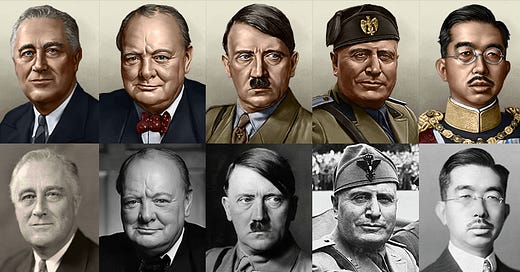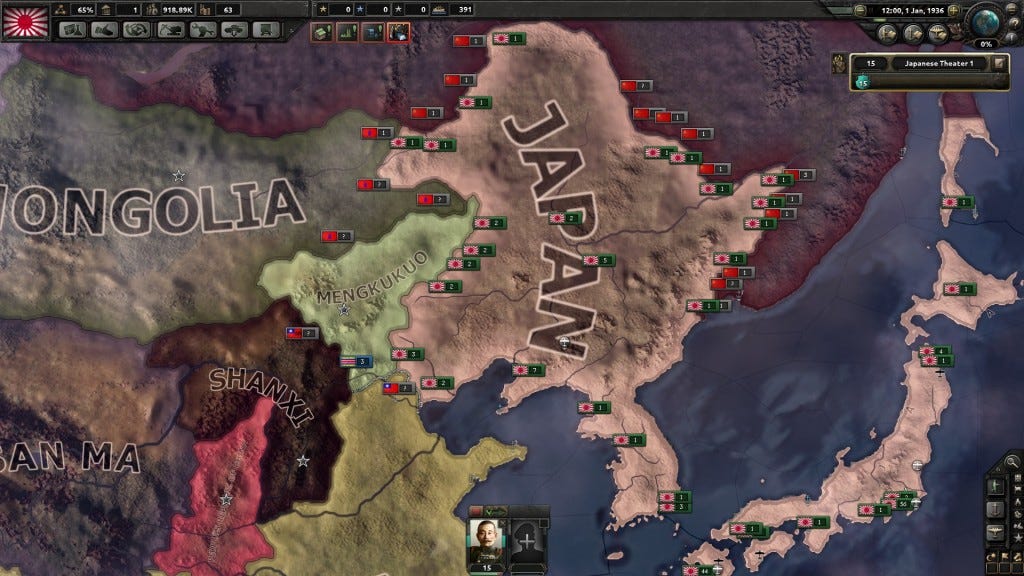
Hearts of Iron IV is an exceptional grand strategy game that masterfully captures the essence of World War II, bringing to life the military figures, weaponry, and leadership of the major Allied and Axis powers. Developed by Paradox Interactive, this game offers an incredibly detailed and immersive experience for those with an interest in military history and strategic warfare. From meticulously recreated weaponry, including rifles, tanks, ships, and planes, to the accurate portrayal of key military leaders, the game comprehensively depicts the Second World War. Players are given command over national infrastructure, military logistics, and high-ranking officers such as Montgomery, Bradley, Patton, Alanbrooke, Model, von Rundstedt, Rommel, and Zhukov, among many others. Every element, from political alliances to military engagements, is handled with a depth that makes Hearts of Iron IV one of the most intricate and compelling war simulations available.
A Global Battlefield
One of the most impressive aspects of Hearts of Iron IV is its sheer scale. Unlike many strategy games that focus on isolated theatres of war, this title offers a truly global battlefield. Players can engage in warfare across every continent, managing resources, planning invasions, and strategically deploying assets in a manner that mirrors real-world conflicts. The level of control is astonishing, allowing players to dictate the fate of entire nations, influence global politics, and change the course of history through their decisions. The game does not limit itself to conventional battles; instead, it incorporates elements of diplomacy, espionage, and economic management, ensuring that every move has far-reaching consequences.
Political manoeuvring is just as vital as military strategy. Players can liberate, annex, or cede territories, including all colonial holdings of the Allies. This means the geopolitical map is highly flexible, with historical and alternative history paths available. Nations such as India, Pakistan, Vietnam, and Nigeria can be formed, and even independent states such as Wales, Scotland, or a united Ireland can emerge. The game offers players the opportunity to rewrite history by creating new nations or preventing certain historical events from unfolding. This feature enhances replayability, as no two campaigns will ever play out in exactly the same way.
Historical Scenarios and Alternate Histories
Hearts of Iron IV not only follows the historical timeline of World War II but also includes significant prelude events and alternative history scenarios. The Spanish Civil War served as an early conflict that players can become involved in, shaping the ideological battle that would later engulf the world. One of the most intriguing alternate history paths includes a German civil war, where a resistance movement led by Hitler fights against internal opposition to retain control of the Reich. These scenarios add further depth to the game, allowing for unique storytelling opportunities and strategic challenges.
Immersive Military Strategy and Management
The military system in Hearts of Iron IV is incredibly detailed, requiring careful planning and execution. Infrastructure development is crucial, as supply lines, transport networks, and resource allocation all play a role in determining the success of a campaign. The game allows players to build up national infrastructure, improving industrial capacity, fortifications, and logistical support. These elements make the game feel more like an authentic simulation rather than just a conventional strategy game.
Commanding forces is also a highlight, with the inclusion of historically accurate top brass in the army, navy, and air force. Generals and field marshals play a vital role in battles, with each leader possessing unique traits and abilities that can turn the tide of war. The level of realism extends to combat mechanics, where factors such as terrain, weather, and supply lines influence the outcome of engagements. Jungle warfare and equatorial battles, for example, require specialised tactics and new technological advancements, making adaptation a key part of the gameplay.
Drawbacks and Challenges
While Hearts of Iron IV excels in many areas, it is not without its flaws. One of the primary criticisms is that it can feel too slow-paced at times. Large portions of the game involve waiting for arms production or infrastructure projects to be completed, which can lead to periods of inactivity. This aspect of the game may not appeal to those who prefer more fast-paced, action-driven strategy games.
Additionally, the game’s length and expansiveness can be daunting. A single campaign can last for hours, requiring a significant time investment. For some players, this is a positive aspect, as it allows for deep strategic planning, but for others, it may feel overwhelming. The learning curve is also steep, particularly for newcomers to the grand strategy genre. The complexity of the game’s mechanics means that mastering the various systems—such as political influence, military logistics, and technological research—requires patience and practice. Battles in challenging environments, such as jungles and mountainous regions, demand careful preparation and advanced research, adding another layer of difficulty.
Final Verdict
Despite these drawbacks, Hearts of Iron IV remains one of the most immersive and comprehensive World War II strategy games ever created. Its attention to detail, strategic depth, and historical accuracy make it a standout title for fans of the genre. The ability to shape the course of history, whether by following the real-world timeline or forging an entirely new path, provides endless possibilities and replayability.
The game is not for the faint-hearted, as it requires dedication, patience, and strategic thinking. However, for those who appreciate complex, historically rich simulations, Hearts of Iron IV is an unparalleled experience. While the slow pace and steep learning curve may deter some, the depth of gameplay more than compensates for these shortcomings. It is a game that rewards careful planning, strategic foresight, and an understanding of historical context.



